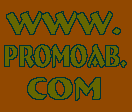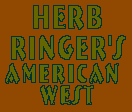 |
||||||
|
|
My parents were devoted to art and music. They covered the walls of my childhood bedroom with prints of Van Gogh, Edvard Munch, and the German Expressionists. Growing up in Taos (my family were third generation New Mexicans), I came in contact with Mabel Dodge, Frieda Lawrence, Georgia O’Keefe, Ernest Blumenschein and Nicolai Fechin. Creativity was all around me. My grandfather had close ties to Taos Pueblo and the Navajo people. Among my earliest memories are trips to Monument Valley and Navajo Mountain. As a young man, I spent a year with Long Salt a Navajo hataali (singer), at Navajo Mountain. He deeply influenced both my life and the spiritual aspect of my art. A few years later, in the early fifties, I was traveling in Switzerland and was introduced to Dr. Hans Fehr in Berne. He was caring for Emil Nolde, to me the greatest of the German Expressionism, Dr. Fehr invited me to visit Nole at his studio in Berne. For the first moments of this meeting, I was dumbstruck in the presences of the old master. Although Nolde was terminally ill, I was able to spend the day with him. He looked through a portfolio of my watercolors, and after a long pause, he said, "Ah, a young American Expressionist." We spent hours discussing the techniques and philosophy of Expressionism, the ideas of Die Brurke and der Blaue Reiter. Then we talked about Nolde’s close identification with nature, his love of the wild North Sea, my love of the Southwest desert, and finally this intense sense of place that we both understood. At the end of the day, Nolde handed me one of his woodcuts, saying, "I hope this will help inspire you to continue your art, in spite of all the obstacles." His encouragement came at a crucial point in my life. From that day, there was no turning back. Painting became my life. Several years later, in the late fifties, I met Edward Abbey in Taos. This was an instant recognition of kindred souls, and we became lifelong friends, sharing the heights and depths of life. (See Down the River by E. Abbey, Edward Abbey: A Life by J. Cahalan, and especially Edward Abbey: A Voice in the Wilderness, a video by E. Temple). Suffice it to say that Ed’s writing and my painting developed out of a deep love that we felt for the land and each other. The peak years of the Abstract Expressionist movement were in the 1950s, and for some of this time, I was an art student in New York City, attending the Art Students’ League and studying with Hans Hoffman. Of special importance was my time with Hoffman in New York City and on Cape Cod. He imparted to me some of his wonderful feeling for color and form- essential to visual _expression of the Canyonlands country. During this time, I met Mark Rothko. His advice and council helped me greatly. He told me, you should return to your roots in the Southwest; the source of your art is there." My time at Oxford University on the G.I. Bill gave me a sense for the significance of art history; I wrote my thesis on the history of expressionism. In conclusion, the two greatest influences on my work have been Expressionism and the Southwest. Expressionism has influence me as a tradition, beginning with Edvard Much and Van Gogh and continuing through the German Expressionists. In this tradition, I translate visual perception to an inner experience, which is manifested in paint. The Southwest landforms and its native peoples are the immediate source of my work. This land speaks of a time sense other than our Western European lineal time. It is this land, its beauty, its myths and its dreams of wholeness that nourish me. Finally, I owe more than I can ever express to the support and love of my wife, Isabel, who is in her own right a fabulous artist. - John R. DePuy, A |
|||||






